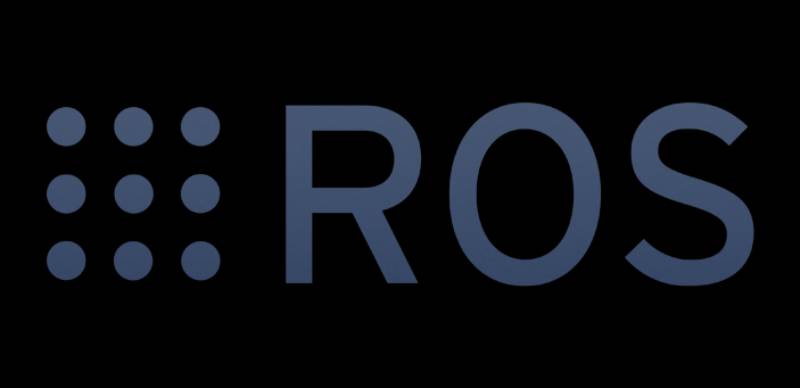1. Introduction & Overview
What is ROS (Robot Operating System)?

- ROS is an open-source framework designed for developing robot applications.
- It is not an operating system in the traditional sense, but rather a middleware that provides:
- Hardware abstraction
- Low-level device control
- Inter-process communication
- Package management
- In RobotOps (Operations practices for robotics, analogous to DevOps for software), ROS acts as the backbone enabling continuous development, testing, and deployment of robotics systems.
History or Background
- 2007 → Initially developed by Stanford AI Lab and later by Willow Garage.
- 2010 onwards → Adopted widely in robotics research & industry.
- ROS 1 → Original version, supported till 2025.
- ROS 2 → Introduced in 2017, designed with:
- Real-time support
- Security enhancements
- Multi-platform compatibility
- Integration with cloud-native and IoT ecosystems
Why is it Relevant in RobotOps?
- Provides standardized tools to automate robot lifecycle management.
- Facilitates CI/CD for robotics software, ensuring reliable deployments.
- Enables simulation-first workflows with tools like Gazebo and Rviz.
- Integrates with cloud services (AWS RoboMaker, Azure Robotics, GCP Robotics) to scale robotics operations.
2. Core Concepts & Terminology
Key Terms and Definitions
| Term | Definition |
|---|---|
| Node | A process that performs computation in ROS. |
| Master | Manages communication between nodes. |
| Topic | Publish-subscribe channel for communication between nodes. |
| Message | Data structure exchanged between nodes. |
| Service | Synchronous communication mechanism (request/response). |
| Bag files | Log files that store ROS message data for playback. |
| Rviz | Visualization tool for robot sensor data and environment. |
| Gazebo | Simulator for testing robots in virtual environments. |
How it Fits into the RobotOps Lifecycle
- Development → Build robot applications using ROS packages.
- Testing → Use Gazebo/Rviz for simulation-driven tests.
- CI/CD → Integrate with Jenkins, GitHub Actions, or GitLab CI for automation.
- Deployment → Roll out to real robots with containerized ROS apps.
- Monitoring → Log collection, telemetry via cloud (Prometheus, Grafana, AWS CloudWatch).
3. Architecture & How It Works
Components
- ROS Master: Central hub for communication.
- Nodes: Independent modules performing tasks.
- Topics: Data channels (publish/subscribe).
- Services: Request-response mechanism.
- ActionLib: For long-running tasks (e.g., navigation).
- Parameter Server: Stores global variables.
- Rviz & Gazebo: Visualization and simulation tools.
Internal Workflow
- A Node publishes sensor data (e.g., from a camera) to a Topic.
- Another Node subscribes to that Topic (e.g., object detection node).
- A Service may be used to request specific information (e.g., “start mapping”).
- Results are visualized in Rviz or tested in Gazebo.
Architecture Diagram (Description)
Imagine a hub-and-spoke model:
- Central Master (hub) manages connections.
- Nodes (spokes) talk via Topics (arrows).
- Simulation tools (Rviz, Gazebo) connect to visualize/test data.
- Cloud CI/CD pipelines integrate at the deployment stage.
Integration Points with CI/CD & Cloud
- CI/CD Pipelines: GitHub Actions/Jenkins build, test, and deploy ROS packages.
- Cloud Robotics: AWS RoboMaker, Azure Robotics, GCP integrate simulations and telemetry.
- Containerization: ROS applications packaged in Docker for portability.
4. Installation & Getting Started
Basic Setup or Prerequisites
- OS: Ubuntu 20.04+ recommended
- Dependencies: Python3, CMake, Git, GCC
- ROS Distribution: ROS Noetic (ROS 1), ROS 2 Humble (latest stable)
Step-by-Step Beginner-Friendly Setup (ROS 2 Example)
# 1. Update system
sudo apt update && sudo apt upgrade -y
# 2. Set locale
sudo locale-gen en_US en_US.UTF-8
export LANG=en_US.UTF-8
# 3. Add ROS 2 repository
sudo apt install software-properties-common -y
sudo add-apt-repository universe
sudo apt update
# 4. Install ROS 2 Humble
sudo apt install ros-humble-desktop -y
# 5. Source the setup script
echo "source /opt/ros/humble/setup.bash" >> ~/.bashrc
source ~/.bashrc
# 6. Verify installation
ros2 run demo_nodes_cpp talker
5. Real-World Use Cases
- Autonomous Vehicles
- Navigation, sensor fusion, and obstacle avoidance pipelines in ROS.
- Integration with RobotOps CI/CD ensures safe software rollouts.
- Healthcare Robots
- Hospital delivery robots using ROS-based mapping and navigation.
- Updates managed via GitOps workflows in RobotOps.
- Industrial Automation
- ROS used in robotic arms for assembly lines.
- Predictive maintenance enabled via telemetry monitoring.
- Agricultural Robotics
- Drones and ground robots using ROS for crop monitoring.
- Integration with cloud data pipelines for real-time analytics.
6. Benefits & Limitations
Key Advantages
- Open-source and community-driven.
- Rich ecosystem of packages and tools.
- Strong simulation and visualization support.
- Scalable for small robots → enterprise-scale fleets.
Limitations
- Steep learning curve for beginners.
- ROS 1 lacks real-time and security features (fixed in ROS 2).
- Debugging distributed systems can be complex.
- High resource usage in simulations.
7. Best Practices & Recommendations
- Security: Use ROS 2 (supports DDS Security).
- Performance: Offload heavy tasks (AI/ML) to cloud or GPUs.
- Maintenance: Use containers (Docker, Kubernetes) for repeatable builds.
- Automation: Integrate with CI/CD pipelines (GitHub Actions, Jenkins).
- Compliance: Align with ISO 13482 (safety for service robots).
8. Comparison with Alternatives
| Framework | Strengths | Weaknesses | When to Choose |
|---|---|---|---|
| ROS (1/2) | Large ecosystem, community, simulation tools | Steep learning, high resources | General robotics, research, RobotOps |
| MOOS-IvP | Focused on marine robotics | Limited general use | Underwater/Marine robotics |
| LCM (Lightweight Communications & Marshalling) | Low latency, simple | Smaller ecosystem | Real-time robotics without complex tooling |
| Microsoft Robotics Developer Studio | Easy integration with Windows | Limited support, discontinued | Legacy Windows robotics projects |
9. Conclusion
- ROS is the de facto standard for robotics software development.
- In RobotOps, it plays the same role as Kubernetes in DevOps: orchestration, lifecycle management, and automation.
- Future trends include:
- ROS 2 dominance with real-time robotics.
- Cloud-native RobotOps pipelines.
- AI/ML integration with ROS for autonomy.
📌 Next Steps for Learners:
- Explore the ROS 2 Documentation
- Join the ROS Discourse Community
- Try hands-on tutorials from ROS Wiki